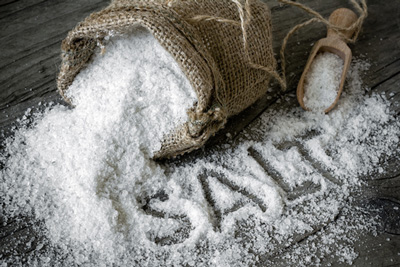Heart Research UK advises consumers to look out for hidden salt
- Like
- Digg
- Del
- Tumblr
- VKontakte
- Buffer
- Love This
- Odnoklassniki
- Meneame
- Blogger
- Amazon
- Yahoo Mail
- Gmail
- AOL
- Newsvine
- HackerNews
- Evernote
- MySpace
- Mail.ru
- Viadeo
- Line
- Comments
- Yummly
- SMS
- Viber
- Telegram
- Subscribe
- Skype
- Facebook Messenger
- Kakao
- LiveJournal
- Yammer
- Edgar
- Fintel
- Mix
- Instapaper
- Copy Link
Posted: 25 February 2016 | Victoria White | No comments yet
With 75% of the salt we eat already hidden in the foods we buy, Heart Research UK says it is easy to find yourself eating a high salt diet without realising it…


Salt is firmly on the UK’s public health agenda with many people aware of the negative health implications of eating too much salt on raising blood pressure and increasing risk of heart disease and stroke.


The food industry has also shown positive steps in reducing the amount of salt in foods, providing lower-salt alternatives and improving the clarity of food labelling.
Despite this, Heart Research UK says that many of us still eat too much salt, exceeding the recommended daily maximum:
| Age Group | Recommended daily maximum |
| 0-6 months | Less than 1g |
| 6-12 months | 1g |
| 1-3 years | 2g |
| 4-6 years | 3g |
| 7-10 years | 5g |
| 11 years + | 6g |
With 75% of the salt we eat already hidden in the foods we buy it is easy to find yourself eating a high salt diet without realising it. Heart Research UK is once again backing Consensus Action on Salt’s ‘National Salt Awareness Week’ which runs from 29 February to 6 March and has devised some healthy tips to help you shop smarter and look out for hidden salt.
According to Heart Research UK, the main offenders of hidden salt are the pre-prepared foods we buy. Breakfast cereal, bread, confectionery, pastries and cakes are just some of the surprisingly salty culprits in your cupboards so check the labels next time you shop. ‘Diet’ or ‘Low Fat’ foods are worth watching as many are not as healthy as you might think. Removing fat from foods changes their texture, taste and shelf life so more salt may be added to compensate.
Heart Research UK is also calling for consumers to better understand labelling. Traffic light labels are a useful tool to keep salt intake in check, though the system is optional for the food industry and isn’t used by all manufacturers making labels a bit of a minefield.
Table salt is sodium chloride, a molecule made up of sodium and chlorine, and it’s the sodium we need to watch out for. Some foods state the sodium content in milligrams (mg) rather than salt in grams, so it’s useful to know how to convert this to salt.
milligrams of sodium x 2.5 = milligrams of salt divided by 1000 = grams of salt
The traffic light system expresses values for nutrients per 100g of the food.
| Category | Salt (g) /sodium (mg) per 100g of food |
| High | 1.5 g / 600 mg (or more) |
| Medium | 0.3 – 1.5 g / 120 – 600 mg |
| Low | 0.3 g / 120 mg (or less) |
Heart Research UK has also provided tips on helping consumers cut down salt consumption. They say that salt is an acquired taste so if you’re cutting down it’s best to do this gradually to allow your taste buds to catch up with the change. They advise getting creative using blends of herbs, spices and garlic in dishes instead of salt.









